
Gotland Pony
- Home
- Our work
- Farm animals
- Nordic native breeds
- Gotland Pony
Origin: Sweden
Native name: Gotlandsruss
Withers height: 115-130 cm
Appearance: The breed includes individuals of all colours except for those with the homozygous yellow (homozygous cream), grey or tobiano.
Type: A popular family pony, often used for riding-, driving and/ or harness racing.
Number of offspring: approximately 250-300 foals per year
Birthweight: approximately 15-30 kg
Number of mares in Sweden 2020: approximately 2500
Number of covered mares in Sweden, 2020: 458
Number of registered foals in 2020: 272
Not at Risk – Vulnerable – Endangered – Critically Endangered – Extinct
All photos by Liselotte Erixon.
Background
The Gotland pony is one of the oldest horse breeds in Europe and is the only pony breed native to Sweden. As the name suggests, the breed originated from the Gotland island, where the horses at first lived more or less in the wild.
New legislation introduced in 1859 led to a drastic drop in the number of Gotland pony individuals, which caused concern that the breed would suffer the same fate as the Öland horse and become extinct. To mitigate the trend of decreasing numbers, the first stud farm for the Gotland pony was founded by Willy Wöhler in the 1880s. Several of his mares were mated to Khediven – the first stallion to be entered in the studbook for this breed. Khediven is most likely a descendant of Knabstrupper, which is a Danish native breed. The diversity of colours of the Gotland pony is most likely descended from this horse. Next to Khediven, another stallion was used for breeding. This stallion was a cross between a Syrian pony stallion and a Gotland pony mare, introducing the possibility for blue-eyed horses with cream coloured coats in the breed.
Unfortunately, the first stud farm eventually closed, but two new stud farms were founded in Gotland in 1901 and competitions using the breed were introduced, increasing public interest for the breed. Despite their efforts, both farms eventually had to close, and the horses were taken over by lieutenant E. Bronthron who continued breeding of the Gotland pony until 1922. At this time, there were only seven mares, one two-year-old stallion and six young horses left. These were donated to a local agricultural organization in exchange for the promise that a strain of the breed would always be preserved.
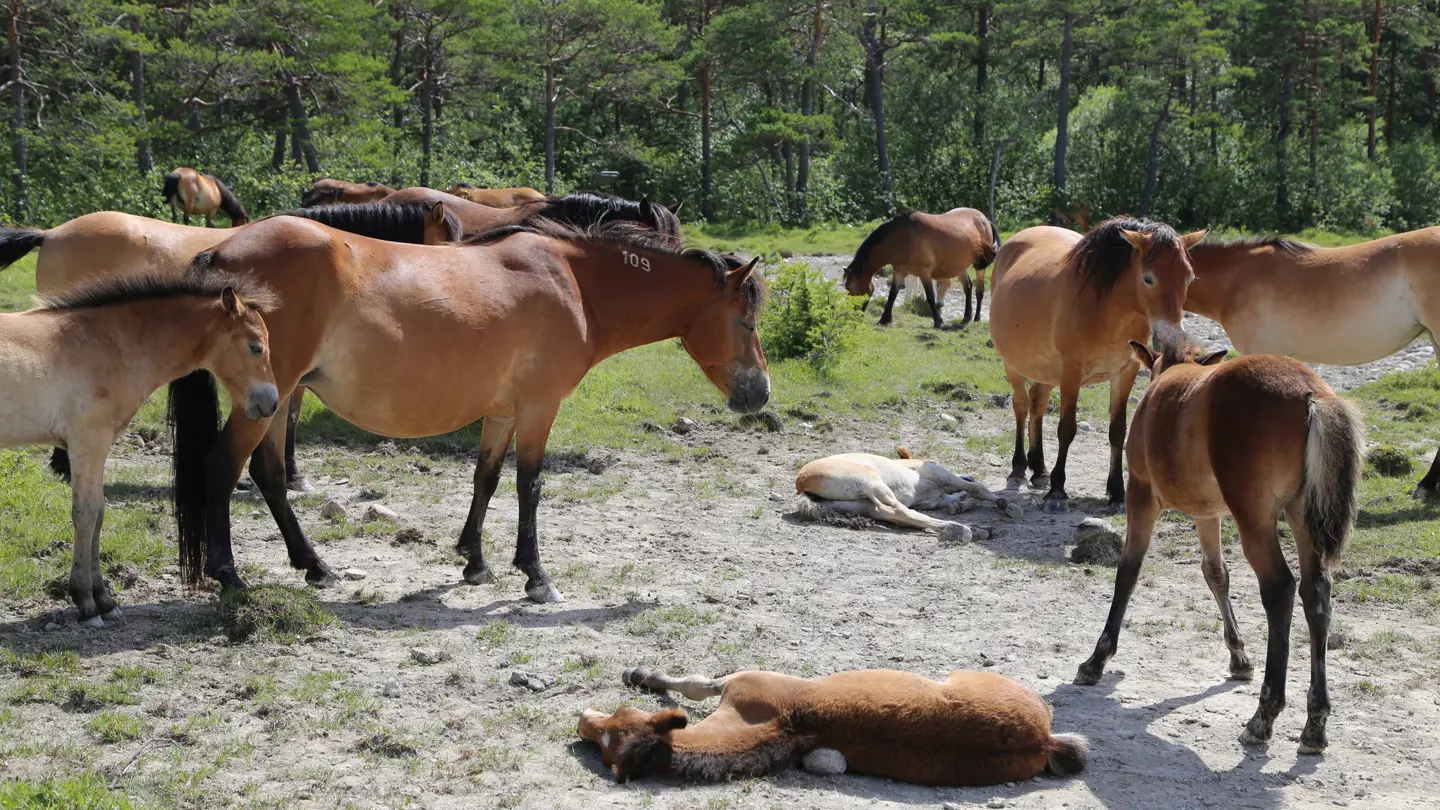
Even though there were ponies in the mainland, the population of the Gotland pony remained small, which led to inbreeding problems. Subsequently, a stallion of the Welsh Pony breed (in 1951) and a stallion of the Welsh Mountain breed (in 1957) were imported and introduced into the population. These stallions are represented in 85-90% of the current individuals of the Gotland pony. However, this is far back in the family pedigree since no new introductions from other breeds have occurred since then. The popularity of the breed increased again after 1961 when they were allowed to be used in competitions on the mainland.
Breed conservation activities
Preservation of traditional land breeds began already in the 1970s. For instance, it was decided that the direct responsibility for genetic conservation would lie with each country. In Sweden, this responsibility was appointed to the Swedish Board of Agriculture. Further, it was also decided that Nordic cooperation in the area would be carried out by a professional group under the Nordic Council of Ministers.
In 1978, the government in Sweden made an inquiry into domestic animal breeds and methods for preservation and utilization of their genetic resources. In addition, it was also decided that finance should be provided to the Nordic Gene bank for Animals, although the actual efforts did not begin until 1984. The main focus for Sweden used to be on preserving threatened national endangered breeds, but this has changed to include national breeds that are used commercially.
Presently, the Swedish Agency for Agriculture has the overall responsibility for preserving the Gotland pony. Responsibility for the practical breeding work lies with the Swedish Gotlandruss breeding association (Svenska Russavelsföreningen). The association is also invested in spreading knowledge about the breed.
Characterization of the breed in science
Characterization is an important part of conservation efforts concerning breeds such as the Gotlandruss, because it provides insight into characteristics unique to the breeds that can be used in the future. For instance, high endurance and robustness are favourable traits represented by the Gotlandruss that become more significant with the present issues of climate change and the continuous evolution of diseases.
Based on a systematic study carried out by NordGen (Kierkegaard et al. 2020) only nine easily accessible studies regarding Gotlandruss had been carried out until 2019. Two-thirds of the studies focused on molecular genetic diversity within and between breeds and other selected breeds.
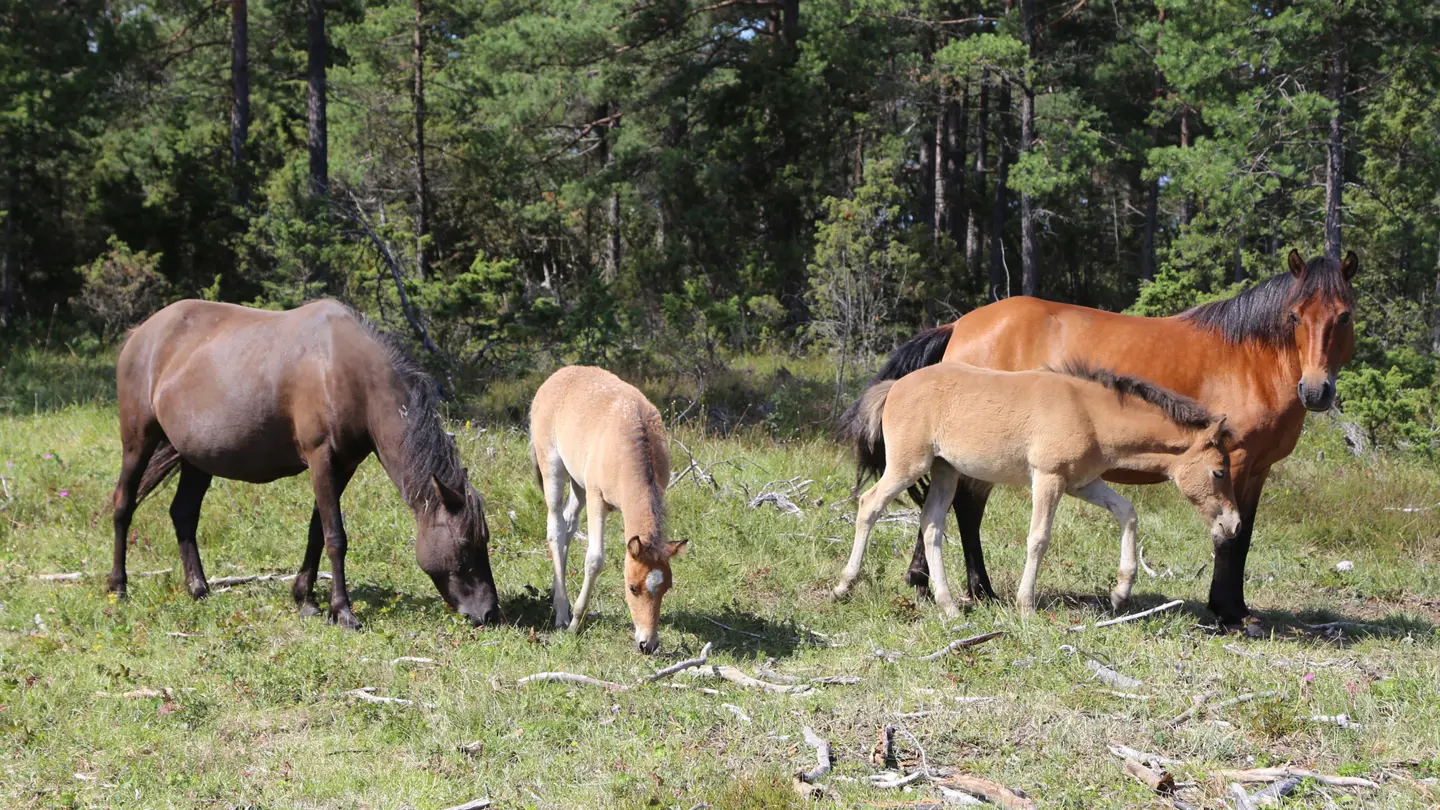
The research involved mapping the origin of domesticated horse lines and studying the evolution of the DMRT3 gene which is associated with specific gaits and inbreeding by using both microsatellite markers and pedigree information. Other studies focused on behavioural traits, including habitat preferences, protection seeking and welfare under extensive circumstances, and resource allocation during winter.
Although Gotlandruss is one of the oldest Swedish horse breeds, few studies exist concerning its socio-cultural significance. The breed is an important part of Sweden’s cultural heritage which is why it also remains important to develop historical knowledge about both breed development and significance for humans. It is also still a great need to characterize the Gotland pony, both in terms of the characterization categories that have not yet been investigated and within the categories where there have been studies, such as in molecular genetics, where there are still many characteristics and traits that have not been mapped.
Fun fact
Gotlandruss is believed to be the oldest surviving horse breed in Sweden.
A herd is still kept in the forest on Lojsta Hed.
References
Andersson, L. (2010). Analysis of inbreeding in the Swedish Gotland Pony using pedigree information and microsatellite markers. Swedish University of Agricultural Sciences, available at: http://stud.epsilon.slu.se/8923/7/andersson_l_160322.pdf
Börjesson, M. (2015). Gotland ponies on extensive pastures–a welfare assessment. Swedish University of Agricultural Sciences, available at: http://stud.epsilon.slu.se/7753/
Cothran, E., Juras, R. & Macijauskiene, V. (2005). Mitochondrial DNA D-loop sequence variation among 5 maternal lines of the Zemaitukai horse breed. Genetics and Molecular Biology 28(4), 677–681.
Fortini, A. (2015). An ethological field study on spatial ecology and resources selection of feral ponies gotland russ during winter. Universitádegli studi di Torino, available at: https://www.researchgate.net/profile/Aura_Fortini/publication/294086730_An_ethological_field_study_on_spatial_ecology_and_resources_selection_of_feral_ponies_Gotland_Russ_during_winter/links/56bda8bc08ae3b4ebe8a934e.pdf
Gustafsson, S., Nord, M. (2010). Bevara, nyttja och utveckla – handlingsplan för uthållig förvaltning av svenska husdjursraser 2010-2020. Stålhammar, E.-M., Frid, G. (Eds.) (2016). Jordbruksverket och Centrum för Biologisk Mångfald, Sverige.
Jordbruksverket (n.d.). Lantraser i genbank. Jordbruksverket, Jönköping, Sverige.
Kierkegaard, L.S., Groeneveld, L.F., Kettunen, A., Berg, P. (2020). The status and need for characterization of Nordic animal genetic resources, Acta Agriculturae Scandinavica, Section A — Animal Science, 69:1-2, 2-24, DOI: 10.1080/09064702.2020.1722216
Näslund, K. (2016). Habitat preferences and shelter seeking behaviour of extensively kept gotland ponies. Swedish University of Agricultural Sciences, available at: http://stud.epsilon.slu.se/8723/7/naslund_k_160108.pdf
Promerová, M., Andersson, L. S., Juras, R., Penedo, M. C. T., Reissmann, M., Tozaki, T., Bellone, R., et al. (2014). Worldwide frequency distribution of the “gait keeper” mutation in the DMRT3 gene. Animal Genetics 45(2), 274–282. doi:10.1111/age.12120.
Staiger, E. A., Almén, M. S., Promerová, M., Brooks, S., Cothran, E. G., Imsland, F., Fegraeus, K. J., et al. (2017). The evolutionary history of the DMRT3 “gait keeper” haplotype. Animal Genetics 48(5), 551–559. doi:10.1111/age.12580.
Vila, C. (2001). Widespread origins of domestic horse lineages. Science 291(5503), 474–477. doi:10.1126/science.291.5503.474.
Viluma, A. (2012). Polymorphism in myostatin gene and athletic performance in Nordic horse breeds. Swedish University of Agricultural Sciences, available at: http://stud.epsilon.slu.se/id/file/2988345
Read more about our other native breeds
-
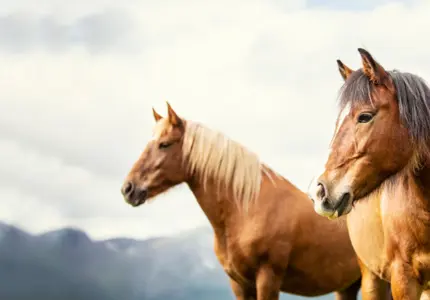
Nordland/Lyngen Horse
The first known and documented exhibition where this breed participated, was in 1898 at Lyngseidet in Troms. In the 1930s, organized breeding of Nordland/Lyngen horses started.
Read more about the breed
-
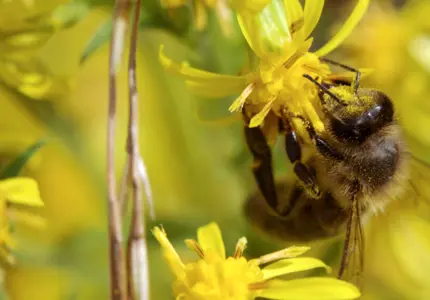
The Nordic brown bee
Honey bees are threatened by intensive agriculture, habitat loss and climate changes worldwide and are important to conserve, not only due to their honey production but also due to their pollination services.
Read more about the breed
-
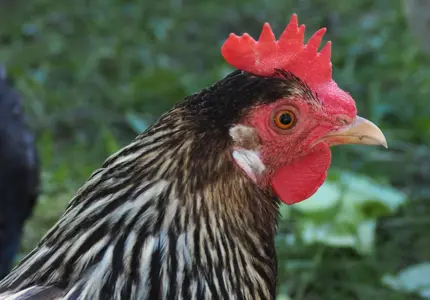
Finnish Landrace Chicken
In 1974, the agricultural advisory agency collaborated with Seiskari and published a call to find remains of the Finnish landrace chicken. As a result, one flock was found in South-East Finland. This family line was named after its geographical location as “Savitaipaleenkanta”.
Read more about the breed